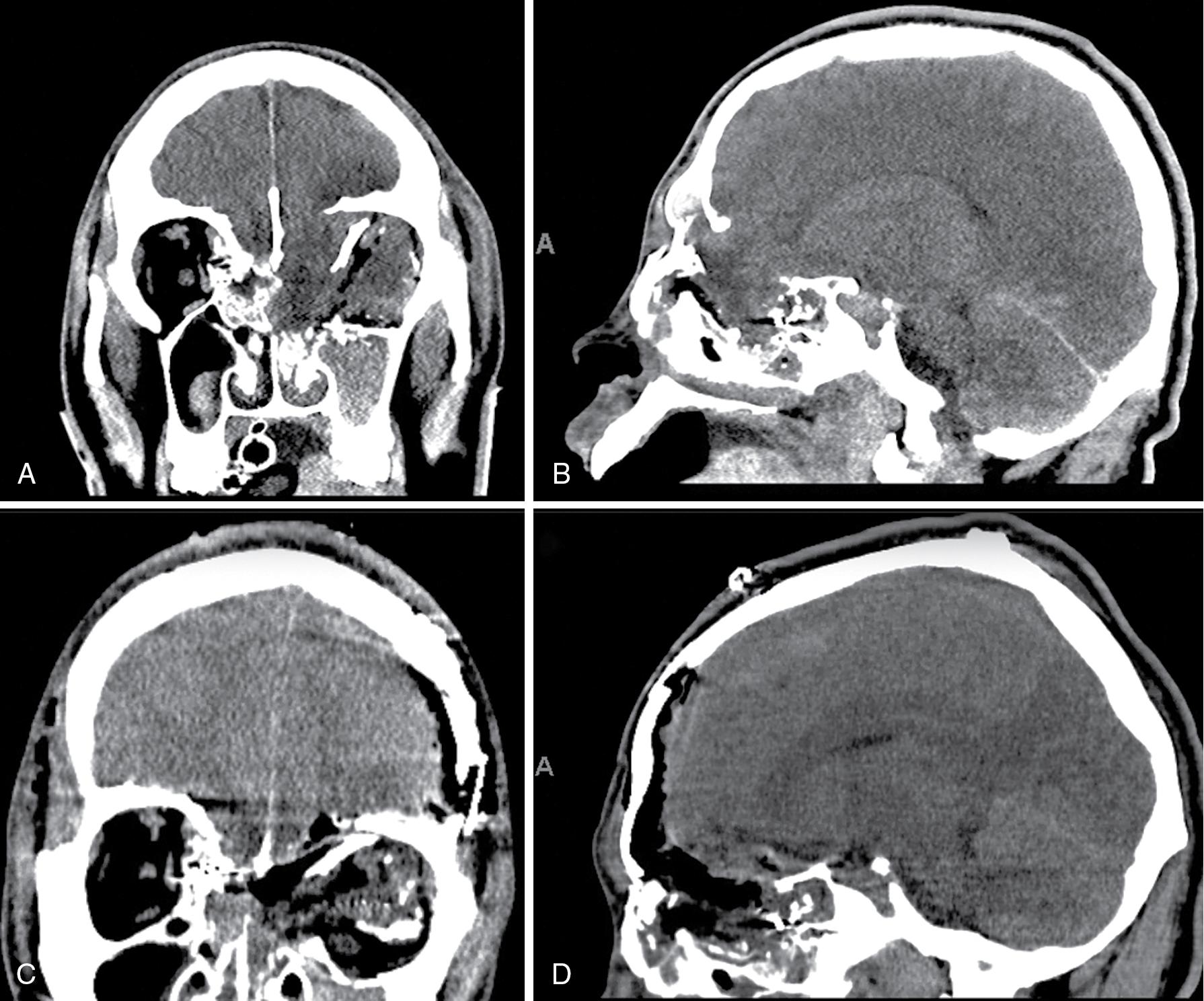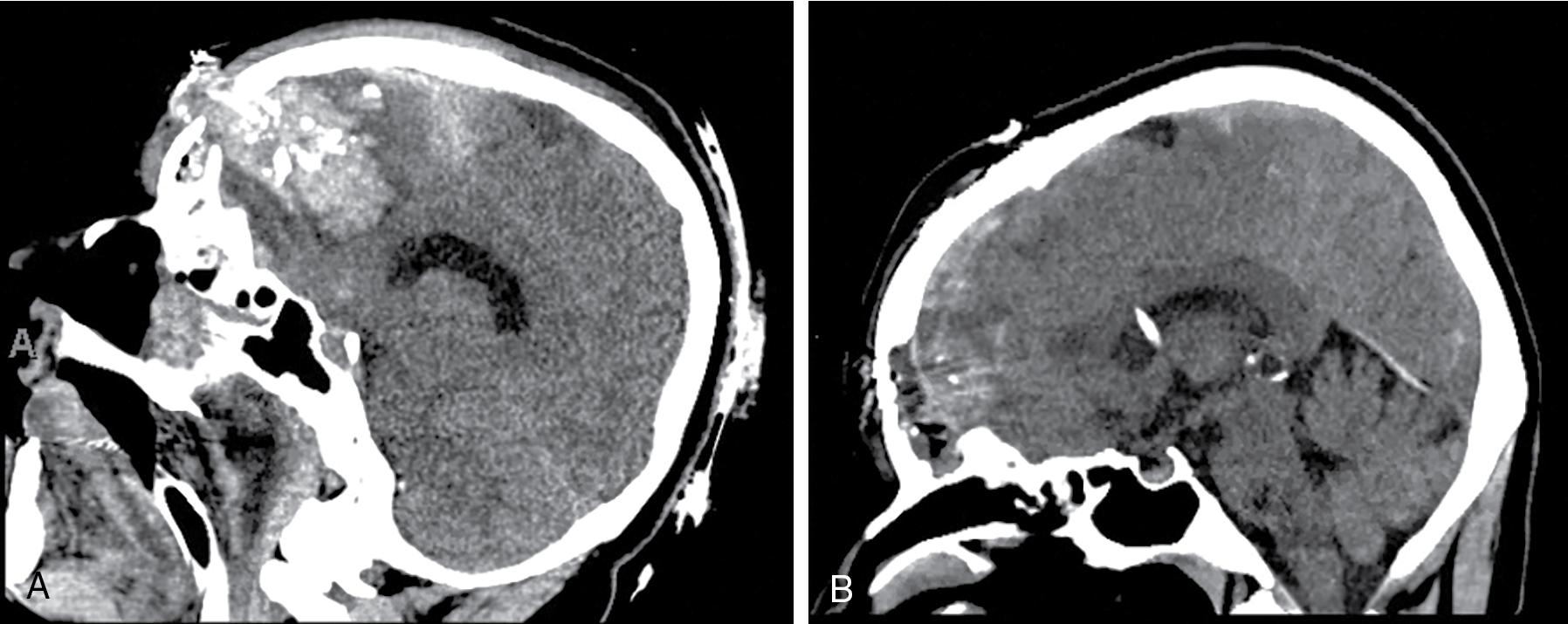Physical Address
304 North Cardinal St.
Dorchester Center, MA 02124
The surgeon’s role in repair of a defect causing cerebrospinal fluid (CSF) rhinorrhea does not end with removal of the drapes. Without appropriate postoperative medical and surgical care, the most well-laid surgical repair may ultimately fail with recurrence of CSF leakage. Although little additional postoperative management is required in some simple cases of anterior skull base, low-flow defects without compounding factors that elevate intracranial pressure (ICP), this is often not the case in practice when treating patients with traumatic skull base defects.
Several anatomic and structural factors as well as patient-specific factors have an impact on the risk of recurrent CSF rhinorrhea and therefore should inform the postoperative management of such leaks. Surgeons must be well versed in the variety of medical and surgical options available to reduce ICP and therefore the risk of postoperative failure and should carefully weigh these treatments against the potential risks of their use. These are detailed and discussed in this chapter.
The location and multiplicity of skull base defects identified preoperatively will impact risk of recurrence and failure in the postoperative setting. Simple, single-site leaks from the anterior fossa (e.g., frontal sinus or ethmoid fracture) and sella tend to be lower flow and have a lower column of CSF pressure driving the leak. In contrast, leaks from the middle fossa (e.g., via the lateral sphenoid or temporal bone) and especially the posterior fossa (clival, petrous temporal via the Eustachian tube) have a higher CSF pressure column with which the surgeon must contend.
Low-flow leaks, seen as slow, wispy flows of CSF from defects not open into a ventricle or subarachnoid cistern, are less problematic than high-flow leaks from larger defects and fistulae into the subarachnoid space. In defects that cause communication between the ventricles (usually third ventricle) and the nose, the flow can be particularly high. In such higher flow leaks, pneumocephalus is often present.
The mechanism of injury will also affect the quality of local tissue and donor tissue used for repair. Blunt injuries with skull base fractures and low-velocity penetrating injuries have inherently healthier tissue at the site of the defect than civilian and military penetrating ballistic and blast injuries that cause significant thermal and sonic damage to surrounding tissues ( Figs. 14.1 and 14.2 ). Such injuries may also limit the quality of tissue used for rotational grafts; for example, in a gunshot wound causing frontal sinus injury, the pericranial graft pedicle is often compromised. The overall effect on donor and recipient tissue can decrease the surgeon’s confidence in the repair achieved.


Become a Clinical Tree membership for Full access and enjoy Unlimited articles
If you are a member. Log in here